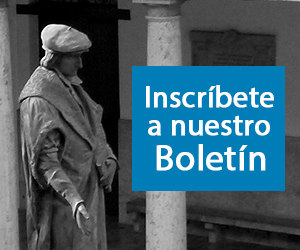
Autor: Isaac Ravetllat Ballesté. Prof. Asociado de la Facultad de Ciencias Jurídicas y Sociales, Director del Centro de Estudios sobre Derechos de la Infancia y la Adolescencia, Universidad de Talca. iravetllat@utalca.cl.
Resumen: El día 05 de junio de 2021 fue publicada en el Boletín Oficial del Estado la Ley Orgánica 8/2021, de 4 de junio, de protección integral a la infancia y la adolescencia frente a la violencia. Los artículos 48 y 49 de la mentada norma establecen el marco regulador básico de la protección de la infancia y la adolescencia frente a la violencia en el ámbito del ocio y el tiempo libre educativo. Ambos preceptos contienen las principales obligaciones atribuidas a las Administraciones Públicas y a las entidades que realizan actividades de esta índole con personas menores de edad de forma habitual, entre las que destaca la designación de la figura del delegado o delegada de protección. Pues bien, el presente estudio ahonda en las características esenciales y los principios informadores que deben guiar las actuaciones del delegado o la delegada de protección, así como articular mecanismos que garanticen su efectiva y eficiente puesta en práctica. Se pretende, en definitiva, resaltar el rol del delegado o la delegada de protección como institución llamada no solo a identificar las conductas a evitar – erradicar – sino también aquellas a las que se debe propender para asegurar entornos protectores para niñas, niños y adolescentes en el ámbito del ocio y el tiempo libre educativo.
Palabras clave: Delegado de protección; violencia contra la infancia; ocio y tiempo libre educativo.
Abstract: On June 5th, 2021, Organic Law 8/2021, of June 4th, on the comprehensive protection of children and adolescents against violence, was published in the Official State Gazette. Articles 48 and 49 of the aforementioned regulation establish the basic regulatory framework for the protection of children and adolescents against violence in the field of leisure and free educational time. Both precepts contain the main obligations attributed to Public Administrations and entities that carry out activities of this nature with children on a regular basis, among which the designation of the figure of the protection delegate stands out. This study delves into the essential characteristics and the reporting principles that should guide the actions of the protection delegate, as well as articulate mechanisms that guarantee their effective and efficient implementation. Ultimately, it is intended to highlight the role of the protection delegate as an institution called not only to identify behaviors to avoid – eradicate – but also those that should be tended to ensure protective environments for children and adolescents in the field of leisure and free educational time.
Key words: Protection delegate; violence against children; leisure and free educational time.
Sumario:
I. INTRODUCCIÓN. –
II. ORIGEN Y PRINCIPIOS DE LA LEY ORGÁNICA DE PROTECCIÓN INTEGRAL A LA INFANCIA Y ADOLESCENCIA FRENTE A LA VIOLENCIA. –
III. CONCEPTO DE VIOLENCIA, BUEN TRATO Y ENTORNO PROTECTOR. –
IV. DEBER DE COMUNICACIÓN DE SITUACIONES DE VIOLENCIA. –
V. DIFERENTES NIVELES DE INTERVENCIÓN EN EL ÁMBITO DEL OCIO Y EL TIEMPO LIBRE EDUCATIVO. –
1. Ámbito de sensibilización (formación). –
2. Ámbito de la prevención. –
VI. EL DELEGADO O LA DELEGADA DE PROTECCIÓN EN EL ÁMBITO DEL OCIO Y EL TIEMPO LIBRE EDUCATIVO. –
1. Designación y desarrollo reglamentario de la institución del delegado o la delegada de protección. –
2. Principios de actuación del delegado o la delegada de protección. –
3. Perfil del delegado o la delegada de protección. –
4. Dependencia jerárquica. – 5. Funciones del delegado o delegada de protección. –
A) Funciones mínimas establecidas por la LOPIVI. –
B) Otras posibles funciones. –
VII. CONCLUSIONES.
Referencia: Actualidad Jurídica Iberoamericana Nº 20, febrero 2024, ISSN:2386-4567, pp. 1474-1505.
Revista indexada en SCOPUS (Q3), REDIB, ANVUR (Clase “A”), LATINDEX, CIRC (B), MIAR, RRDe (Q1), IDR (C2).





